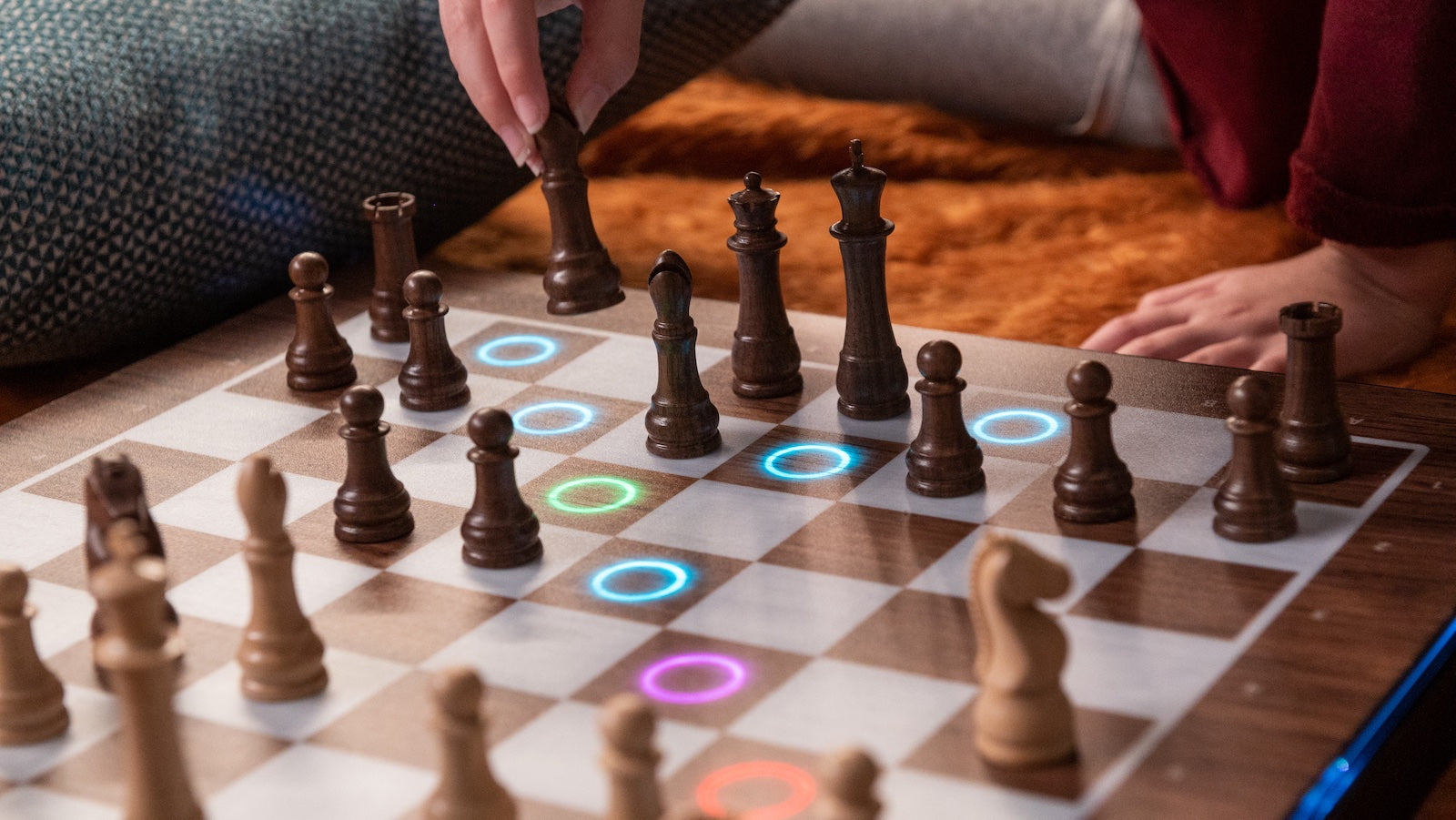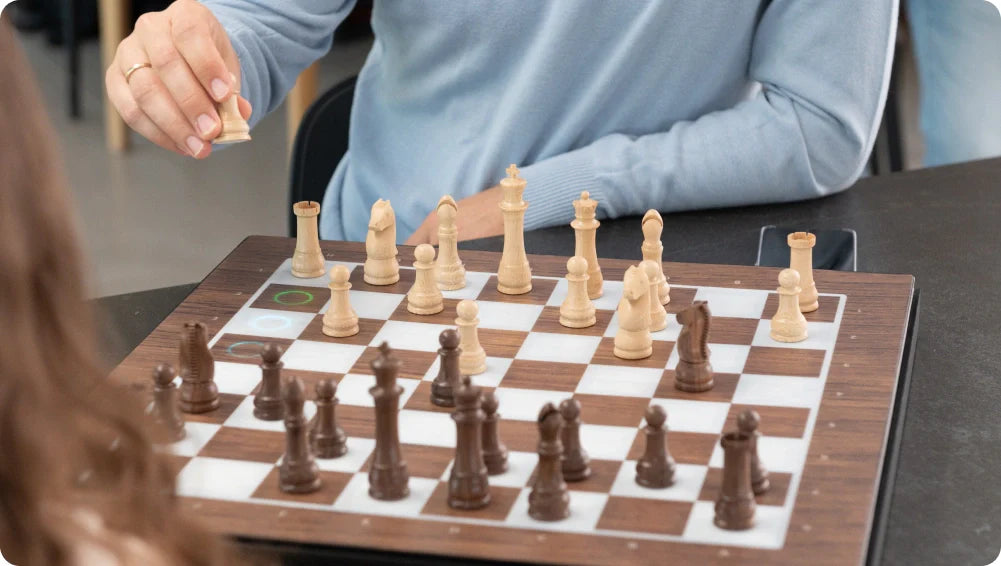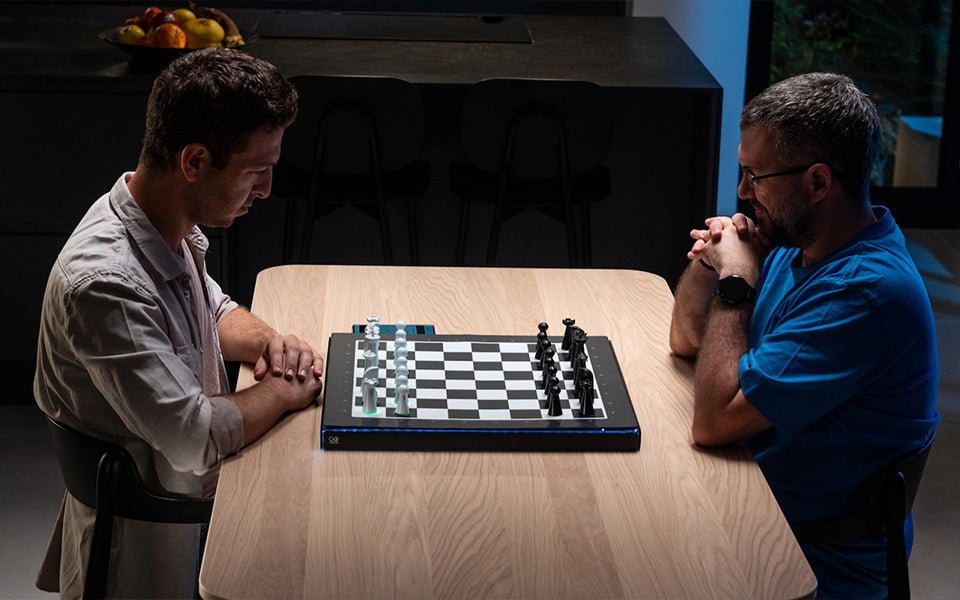At first glance, a chess opening might seem like a set of routine moves to get the game started. But for serious players, or even those who want to stop losing in the first ten moves, openings mean everything. A strong opening (sometimes even an aggressive opening) sets the stage for control, tempo, development, and future tactical opportunities. A weak one, on the other hand, can lead to a cramped position, an exposed king, or irreversible material loss by move fifteen.
The best chess openings aren’t only about theory. They’re about setting up for mid-game power and reducing risk, all while baiting your opponent into making choices they might not be ready for. Every chess grandmaster, from Fischer to even kids, built their greatness on a deep understanding of openings and the strategies behind them.
What Makes an Opening “Good”?
There’s no such thing as one best chess opening for every player. A great opening has more to do with how it fits your style and how well you understand the principles behind it. But generally speaking, solid openings follow certain core principles:
- Control the Center: Strong openings always fight for central squares (e4, d4, e5, d5).
- Develop Your Pieces Early: Knights and bishops should be activated quickly, ideally before move six.
- King Safety Comes First: Castling early is usually a good idea to protect the king and connect the rooks.
- Avoid Moving the Same Piece Twice: Every move in the opening matters. Don’t waste time.
- Don’t bring the Queen Out Too Early: It’ll just get attacked and have to move again.
These rules can guide your play, but like all things in chess, they can be broken if you know why.
Powerful Openings When Playing White
Let’s begin by looking at some of the most enduring and effective openings when playing as White.
1. The Italian Game (1.e4 e5 2.Nf3 Nc6 3.Bc4)
The Italian Game is one of the oldest documented chess openings, appearing in manuscripts from the 1500s. But it’s far from outdated. Today, it’s a staple in amateur and professional play alike. Its popularity stems from its balance—it’s aggressive enough to create attacking chances, but also grounded in classic positional principles.
In the Italian, White’s bishop immediately eyes the vulnerable f7 pawn. Combined with a knight already developed to f3, this can put a lot of pressure on Black early. There are two primary continuations from here: the Giuoco Piano (quiet game) and the Evans Gambit, a more aggressive gambit that sacrifices a pawn for initiative and tempo.
What makes the Italian ideal for beginners is its straightforward plan. Develop, castle, and then push for central control or a kingside attack. For more advanced players, nuances in pawn structures and tactical shots make it a rich and flexible opening.
Who It’s For: Players who want a balanced approach, with potential for direct attacks or positional maneuvering.
2. The Ruy López (1.e4 e5 2.Nf3 Nc6 3.Bb5)
The Ruy López is a cornerstone of classical chess theory. Named after a Spanish priest and chess enthusiast, it’s also known as the Spanish Opening. At first, it looks similar to the Italian, but the bishop goes to b5 instead of c4. Why?
The goal here is subtle pressure on the knight defending the e5 pawn. This knight is pivotal for Black’s central hold. By targeting it, White creates long-term positional threats. Many lines in the Ruy López can become highly tactical or deeply strategic depending on the variation. It’s been played in countless World Championship matches.
One of the most respected variations is the Closed Ruy López, where both players develop slowly but with tension building every move. The Open Ruy López, in contrast, often leads to sharp tactical battles. Either way, you’ll find yourself in the territory of deep planning.
Who It’s For: Strategic players who enjoy slow builds, long-term pressure, and textbook positional ideas.
3. The Queen’s Gambit (1.d4 d5 2.c4)
One of the most famous chess openings of all time, the Queen’s Gambit reached mainstream fame after a certain Netflix series, but its real impact on chess history runs much deeper.
By offering the c4 pawn, White aims to draw Black’s d5 pawn away from the center. If Black accepts (the Queen’s Gambit Accepted), White gets the center back and a strong lead in development. If Black declines with e6 (Queen’s Gambit Declined), the game transitions into complex positional play.
The Queen’s Gambit is not a true gambit in the reckless sense. White usually recovers the pawn or gains something better. It teaches concepts like tension, space, and how to create long-term advantages.
Who It’s For: Players who prefer d4 systems, enjoy strategic complexity, and want to understand tension-based play.
4. The English Opening (1.c4)
While not as popular as 1.e4 or 1.d4, the English Opening has quietly become a weapon of choice for positional players around the world. It allows White to avoid sharp theory-heavy lines and instead steers the game into quieter waters.
With 1.c4, White controls the d5 square and often builds a pawn structure with g3 and Bg2, creating long-term control over the central light squares. This setup is often referred to as the Botvinnik System in honor of the former world champion.
Unlike e4 openings, which frequently lead to early clashes, the English is more restrained. The goal is to slowly dominate space, create imbalances, and wait for your opponent to make inaccuracies.
Who It’s For: Patient players who prefer quiet maneuvering and long-term planning over immediate tactics.
5. The King’s Indian Attack (1.Nf3 followed by 2.g3, 3.Bg2, 4.0-0, 5.d3)
The King’s Indian Attack (KIA) is less a specific sequence of moves and more a structure that White can aim for against a variety of responses. This system-oriented approach focuses on fianchettoing the bishop, castling early, and then launching a kingside pawn storm with e4, Nd2, and f4.
The KIA is popular at the club level because it avoids heavy opening theory. Even if Black plays different replies (like the French Defense or Caro-Kann), White can still use a similar setup.
Its strength lies in its flexibility and direct kingside attack. Even though the position may look passive at first, the KIA can unleash a sudden and powerful offensive that surprises unprepared opponents.
Who It’s For: Players who want a universal system they can use regardless of Black’s responses and enjoy attacking chances.
The Role of Opening Preparation in Modern Chess
In the age of databases, engines, and online platforms, opening preparation has become even more important. Elite players now go 20 moves deep into preparation, trying to find tiny edges or force early errors. But even for everyday players, understanding a few solid openings in depth can elevate your game.
A tool like GoChess, for instance, adds another layer to this experience. Instead of memorizing lines on a screen, you can use a physical smart board that integrates with an app and gives you move suggestions, built-in light hints. It’s ideal for practicing your opening repertoire in a way that feels like real play.
You can play against an AI that offers 32 different difficulty levels, letting you progress at your own pace or challenge yourself with stronger opponents. And if you're playing with a friend, GoChess also supports face-to-face play, bringing that over-the-board experience to life with smart features and clean design.
Summary of the Best Openings for White
|
Opening |
Main Move Order |
Style |
Ideal For |
|
Italian Game |
1.e4 e5 2.Nf3 Nc6 3.Bc4 |
Balanced |
Beginners to intermediate |
|
Ruy López |
1.e4 e5 2.Nf3 Nc6 3.Bb5 |
Positional/Strategic |
Classical players |
|
Queen’s Gambit |
1.d4 d5 2.c4 |
Strategic/Positional |
d4-based players |
|
English Opening |
1.c4 |
Positional/Quiet |
Advanced/Positional stylists |
|
King’s Indian Attack |
1.Nf3, 2.g3, etc. |
Universal/Attacking |
Players avoiding deep theory |
Best Openings for Black: Defending with Purpose
While White gets the first move and a small initiative, Black holds no less strategic potential. The best Black openings aren't just reactive, they're proactive counterattacks, cleverly structured defenses, and traps waiting to be sprung. Choosing an opening as Black often depends on whether you prefer solid, risk-averse setups or sharp, tactical battles.
Let’s go through a few of the most effective and time-tested openings for Black, divided by the response you’re facing.
Against 1.e4 (King’s Pawn Opening)
When facing 1.e4, Black has several strong defenses to choose from. One of the most powerful and popular is the Sicilian Defense.
1. The Sicilian Defense (1.e4 c5)
The Sicilian is easily the most popular response to 1.e4 in high-level chess. It’s a combative, asymmetric answer that immediately breaks the symmetry of the board and signals: this will not be a quiet game.
The Sicilian isn’t one opening but a family of systems. Each comes with its own style and complexity:
- Najdorf Variation: Aggressive, highly theoretical, and deeply analyzed—favored by Bobby Fischer and Garry Kasparov.
- Dragon Variation: Fianchetto setup with dynamic kingside play.
- Classical and Scheveningen: Balanced and positional.
Players who choose the Sicilian must be prepared for theory, but the payoff is rich: powerful counterattacks, open positions, and constant chances to unbalance the game.
Who It’s For: Ambitious players who want to win as Black and don’t mind memorizing sharp lines.
2. The French Defense (1.e4 e6)
The French Defense is the embodiment of solidity. By playing e6, Black allows White to take the center with d4 but then prepares to challenge it with ...d5. What follows is a closed structure, often leading to long-term positional battles.
A few well-known variations include:
- Advance Variation (3.e5): White grabs space, Black tries to undermine.
- Exchange Variation: Leads to a symmetrical and drawish structure, unless one player takes risks.
- Winawer Variation (3.Nc3 Bb4): Black pins the knight, causing imbalances.
The French is unique in that it often involves unusual pawn structures and long-term plans rather than quick tactics. It also teaches patience and the importance of timing.
Who It’s For: Defenders and strategic thinkers who value structure over immediate chaos.
3. The Caro-Kann Defense (1.e4 c6)
The Caro-Kann is another classical reply to 1.e4. Like the French, it aims for d5, but does so in a way that avoids locking in Black’s light-squared bishop. This difference often gives Caro-Kann players easier development and fewer long-term weaknesses.
Its main strengths lie in the solid pawn structure and the reduced tactical vulnerability. However, White still holds the initiative, and if Black plays too passively, White can seize a strong grip on space.
Who It’s For: Positional players who want a safe, theory-light, and effective way to neutralize e4.
Against 1.d4 (Queen’s Pawn Opening)
The King’s Indian is a dramatic response to 1.d4. Black allows White to build a broad pawn center, then sets out to destroy it.
1. The King’s Indian Defense (1.d4 Nf6 2.c4 g6)
In this opening, Black fianchettoes the kingside bishop, castles quickly, and later attacks with ...e5 or ...c5. Once White commits to expanding in the center, Black prepares a counterattack that can rip open the board and lead to fireworks.
While risky and demanding, the King’s Indian offers dynamic play and excellent chances for the well-prepared.
Who It’s For: Aggressive players who don’t mind giving space in exchange for counterplay and attacking chances.
2. The Slav Defense (1.d4 d5 2.c4 c6)
The Slav Defense is a sturdy and highly respected answer to 1.d4. It avoids many of the complexities of other d4-based systems and provides a reliable foundation for defense.
By playing ...c6, Black supports the d5 pawn and prepares to develop the light-squared bishop before locking the center. Unlike the Queen’s Gambit Declined (which blocks in the bishop with ...e6), the Slav allows for a more active setup.
It's popular at every level, and its variations—from the Semi-Slav to the Chebanenko—cover a range of styles.
Who It’s For: Positional players looking for a bulletproof setup with solid development.
Summary of the Best Openings for Black
|
Opening |
Main Move Order |
Style |
Ideal For |
|
Sicilian Defense |
1.e4 c5 |
Combative/Sharp |
Ambitious players |
|
French Defense |
1.e4 e6 |
Solid/Positional |
Defenders and strategic thinkers |
|
Caro-Kann Defense |
1.e4 c6 |
Solid/Theory-light |
Positional players |
|
King’s Indian Defense |
1.d4 Nf6 2.c4 g6 |
Dynamic/Attacking |
Aggressive players |
|
Slav Defense |
1.d4 d5 2.c4 c6 |
Solid/Reliable |
Positional players |
Physical Tools That Reinforce Opening Mastery
Chess learning has changed. You no longer need to spend hours memorizing lines or watching endless videos. GoChess blends tactile play with modern tech.
With hints and move lighting, it acts like a coach while you play. The board uses LED lights to indicate best, possible, and wrong moves, helping you understand not just what to play but why. This feature is fully optional—you can switch it on or off anytime, or even choose which types of hints you want to see. You can track your progress digitally, get feedback on move order, and replay master games to learn openings by imitation.
Mistakes to Avoid in the First 10 Moves
It’s not only about what to do, it’s about what not to do. Here are opening mistakes that derail games:
- Moving the Queen Early: She’ll just get chased and you’ll lose tempo.
- Neglecting King Safety: Always plan to castle early unless you have a clear reason not to.
- Pawn Grabbing: Snatching a free pawn can backfire if it opens lines or neglects development.
- Too Many Pawn Moves: Pawns don’t come back. Move pieces unless a pawn move supports them.
- Ignoring Opponent’s Threats: Chess is a two-player game. Always watch what your opponent is doing.
Final Thoughts
Opening knowledge isn’t about memorizing twenty-move variations. It’s about understanding goals, recognizing patterns, and knowing what kinds of positions you want to reach. Strong opening players rarely just copy lines; they know why each move matters.
Pair your study with:
- Tactical puzzles to sharpen awareness.
- Game reviews to identify early mistakes.
- Tools like GoChess to reinforce patterns physically.
Whether you're a beginner or club-level competitor, investing time in your openings pays off across the entire game. Because good openings don’t just lead to better middlegames, they create winning positions before the fight even begins.




















